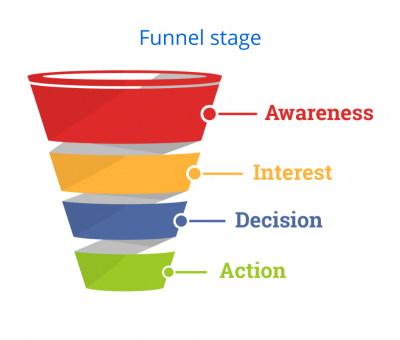Simple email marketing segmentation strategies
Any self-respecting marketer knows that segmenting your email marketing lists ensures that more people open your emails and click on something. We took a quick look at some user data from Mailchimp, one of the most popular email marketing tools. The data says that segmented campaigns get opened 14.37% more times, and that those 64.78% get more clicks. But how do you segment your lists in the best way? It seems like a daunting task. We’ll help you get started with 10 email marketing segmentation strategies that actually work.
But before we go any further: what exactly is segmenting? Segmenting your audience means dividing it into smaller collections of contacts that share certain characteristics. Those characteristics must be relevant to your business. If gender is not a relevant parameter for your business, you don’t need to segment on it. You can ask your target group for this data, but you can also collect it yourself, for example through surfing behavior or past purchases.
Segmenting based on demographic data
By far one of the most common ways to segment your list of email addresses is based on demographics. Age, gender or job title are data that tell you a lot about your contact person. The more data you have, the better you can segment and personalize your campaigns. But if you ask for too much data, the chances of them actually registering for your marketing mails become slim. The trick here is to find a good balance.
First of all, check what data you really need for your business, and ask questions about that when people register for something. Say you’re a coaching company, then you definitely want to get a job title from your target audience. If you sell clothing, then gender and age might be interesting data to have. Make a top 3 of your most important demographics. If you have a really complex business, you can opt for more, but it’s not ideal. It’s good to know that with progressive profiling you can also enrich your data later on.
Engagement
The way in which your audience is engaging with your emails is a simple way of segmenting, but one with impact. Every email marketing software tracks the open rate and clickthrough rate of your campaigns. You can also use that data to segment. You can distinguish between active and inactive users. For example, you can pick out those users who have not opened your last x number of campaigns, and you can then develop a separate targeted campaign for them.
A side note: since the most recent iOS updates, not all email engagement is tracked anymore. So you will not know how some people engaged with your emails. Still, there is plenty of data left for you to use to your advantage.
Geography
Another way to segment your list is through geographic data. This is a very useful way of segmenting especially if your organization is affected by geographic differences. Retail, for example, often benefits from targeting specific regions separately. There are a few different ways in which you can use geograpic data for segmentation:
- Regional promotions: give discounts in certain stores but not all of them, then you can use geographic data for this.
- Personalized travel instructions: if participants come to your events, you can send them customized instructions based on where they live.
- Location-specific content: use the location of your target audience in the topic to attract their attention.
It doesn’t stop here. Just get creative with content, use your business logic to come up with some ideas on how to use location to target specific people and you’ll definitely see some results.
Past purchases
Another easy way to dived your list of contacts into segments is based on purchases they have already made with you in the past. You can easily offer existing customers similar products or related services via email that way.
Maybe some of your products need regular maintenance or refills over time. These are all things you can easily offer them via email. You surely have an idea on the average use of your products. If you know your target audience well enough, you can anticipate when approximately they need that maintenance and send an email in time to remind your customers. Or you can created segments based on the kinds of products they have bought, on how often or how much they bought, and so on. There is a huge amount of possibilities here for you to play around with.
With the information you collect in your CRM, you can create segments of buyers with a high buying frequency or with a preference for your most expensive products for example. With your campaigns you can target these specifically, driving more sales and more revenue this way.
Segmenting by funnel stage
You can also segment based on where your prospects currently are in the funnel. Someone at the top of the funnel should be sent a different type of email than someone at the bottom: the difference between both is just too big to be sending them the same content.

If someone you don’t know yet has just signed up for your newsletters, they are at the top of your funnel. In this case you may want to stick to sending them a welcome email, and maybe introducing yourself and your business a little bit. Of course you don’t do that to someone who is already a paying customer and therefore at the bottom of the funnel. You can send them information about the products they are using, additional products or services, and so on. Those are not meant for that person at the top of your funnel that just registered for your newsletter.
If you have an online store, then cart abandonment (filling a shopping cart but then suddenly disappearing) is a clear sign that that person is at the bottom of your funnel. They have given a clear signal that they want to buy, they just haven’t made the payment. It is then up to you to do something about it, and nudge them towards a online purchase. Good content or perhaps a discount can do that.
Browsing behavior
Do you monitor the browsing behavior of users on your website? If so, that’s another thing you can base your segments on. If you monitor that, you know which pages and which content they like or dislike, and you can use that information to further segment your target group.
You should really take the time to analyze that data a little more thoroughly. It may not be the sexiest task for you, but it’s worth it. Not only will you gain knowledge about your target audience from this. You can also use that information to adjust your online marketing, determine what you should be focusing more on, and what you should be doing less of. That way you get more results out of your limited resources.
Their last purchase
You can also segment based on the last purchase someone made. More specifically, how long ago this was. For example, you can differentiate between customers who recently bought something or buy regularly, and customers who made one purchase a long time ago. Obviously, it’s best not to approach them both in the same way if you want to convince them to make their next purchase. This way of segmenting really helps you be more relevant.
- upgrades to their existing products or services
- promotions for new services or features
- an upsell to another type of product or service
On the other hand, you also have one-time buyers, or people who used to buy from you regularly but stopped doing so. Your emails then serve to convince them to become customers again. We call those reactivation mails or campaigns. You can apply this by:
- sending personalized emails with discounts on previously purchased products
- emphasizing the positive points of your company and your products or services
- Sending reminders at certain times to order your products, in line with their interests and/or the time of the year
Surveys
Many companies also do regular surveys, about their company in general, about products or services, about an event, or the industry in general. With simple surveys you can learn a lot about your target audience’s budget, beliefs, personal preferences and the like. There are many tools available such as SurveyMonkey that allow you to easily and digitally survey your target audience.
If you ask us, segmentation is a must if you want to do email marketing really well. And it makes sense, too. You yourself probably only want to receive personalized emails, with information relevant to you. Email marketing allows you to communicate one-on-one with customers and prospects. The more you succeed in this, the more likely people are to open your email and take the desired action. And that is the ultimate goal of your emails. With progressive profiling you can make this process even more efficient. We hope this has inspired you to get started with segmentation. If you want to know more about segmentation or how to set it up in Hubspot, feel free to contact us.
Automating your emails and more?
Download The Ultimate Marketing Automation Guide And Grow Your Company Exponentially!






